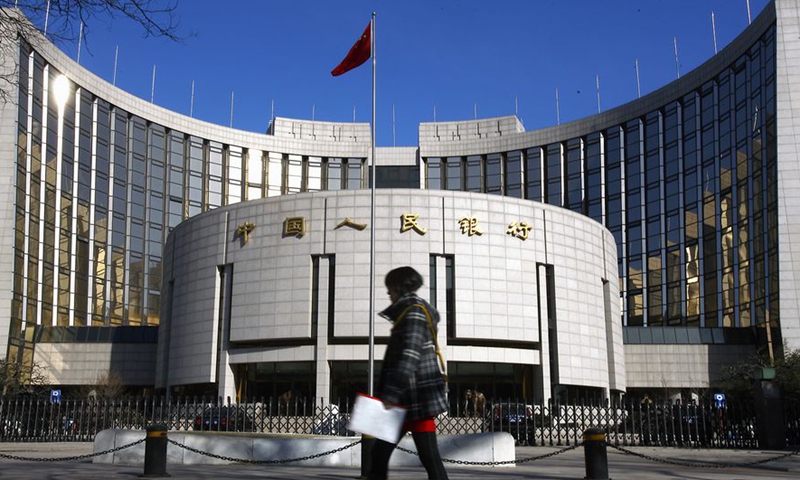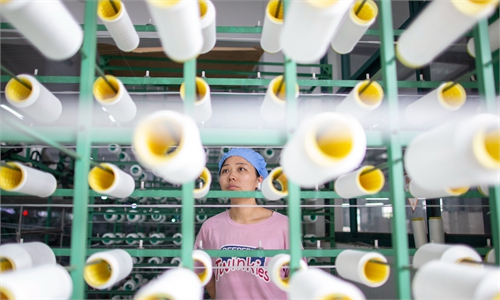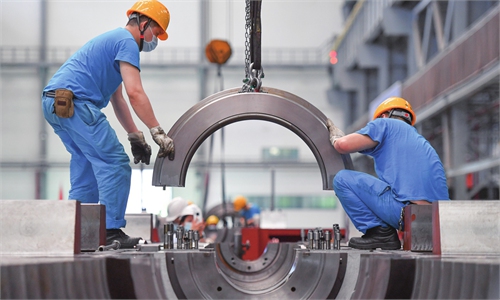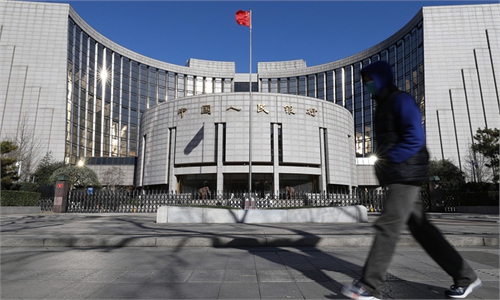COMMENTS / COLUMNISTS
China’s cut of interest rates to spur economic growth

A file photo shows a pedestrian walks past the headquarters building of the People's Bank of China in Beijing, capital of China. (Xinhua)
To spur economic growth, China's central bank moved to cut two benchmark lending interest rates on Thursday, which is expected to help the country's cooling economy stabilize and avoid a hard landing in the first quarter of 2022.
The People's Bank of China, the central bank, reduced the one-year loan prime rate (LPR) on which most new and outstanding loans are based, to 3.7 percent from 3.8 percent, and the five-year loan prime rate, considered a reference rate for home loans, to 4.6 percent from 4.65 percent. Last month, the bank cut the one-year LRP by 5 basis points.
If no prompt measures are taken by the central authorities in Beijing, that risk of a hard landing is likely to increase. The world's second largest economy slowed down to 4.0 percent growth in the last quarter of 2021, although the whole year growth reached 8.1 percent, thanks to robust development in the first six months.
More monetary easing and fiscal stimulus programs are needed in 2022 - such as further cuts of the LPR and the commercial banks' reserve requirement ratio, as the country now faces a flurry of headwinds, including global supply bottlenecks, ongoing tariffs war with the US, property sector downturns, and sporadic coronavirus flare-ups which would dampen social consumption and growth of the crucial services sector.
It is imperative for China's policymakers to maintain a stable rate of economic growth in 2022, a year marking the country's efforts to deepen structural reforms and make new progress in technological competition with the United States. And, the all-important 20th National Congress of the Communist Party of China is scheduled to be held in Beijing in the autumn this year.
China's giant economy grew in size to 114 trillion yuan ($18 trillion) last year, which accounted for roughly 80 percent of the US' GDP. The government's strong investment in infrastructure, such as on high-speed trains and 5G broadband, and the country's outsize manufacturing industry and its unparalleled export capability, are two major drivers of its hectic growth.
Although the government officials have repeatedly stressed that they are not interested in whether and when China's GDP could surpass the US in nominal dollar terms, many Chinese economists and ordinary people are pinning hope on the policymakers to work more diligently and creatively to speed up the pace of growth.
The Chinese Academy of Social Sciences (CASS), a major government think tank, forecasts that the country could achieve at least 5.5 percent GDP growth in 2022, which has made the chord of the general public in the country.
Earlier this week, Liu Guoqiang, vice governor of the People's Bank of China, stated publicly that the central bank should "hurry up, make our operations forward-looking, move ahead of the market curve, and respond to the general concerns of the market in a timely manner", while urging for quick policies that are able to foster economic growth.
Then the bank came with notable policy front-loading with the reductions of both the one-year and five-year loan prime rates, which will push down business borrowing costs and may work to catapult the cash-hungry property sector out of its doldrums in the first half this year.
The policymakers have set a few "red lines" to curb the debt levels of property developers that led the property sector to a correction with sharply lower home sales and new land development. Several major developers, like the Evergrande Group, have encountered difficulties in paying back loans and bonds. Beginning this year, authorities have pushed lenders to increase the volume of mortgage loans to revitalize the sector, which is supposed to make up one fifth of the GDP.
China is endowed with the necessary economic conditions to cut the interest rates, as the country was able to cap inflation at a mere 0.9 percent on average last year, and 1.5 percent in December. Major developed countries are troubled with surging price rises as the US saw its inflation skyrocket to 42-year high of 7 percent in December. While the US and other government will be forced to raise interest rates in order to tame inflation, policymakers of China have the flexibility to take a divergent move to cut rates to jumpstart economic growth.
The author is an editor with the Global Times. bizopinion@globaltimes.com.cn



